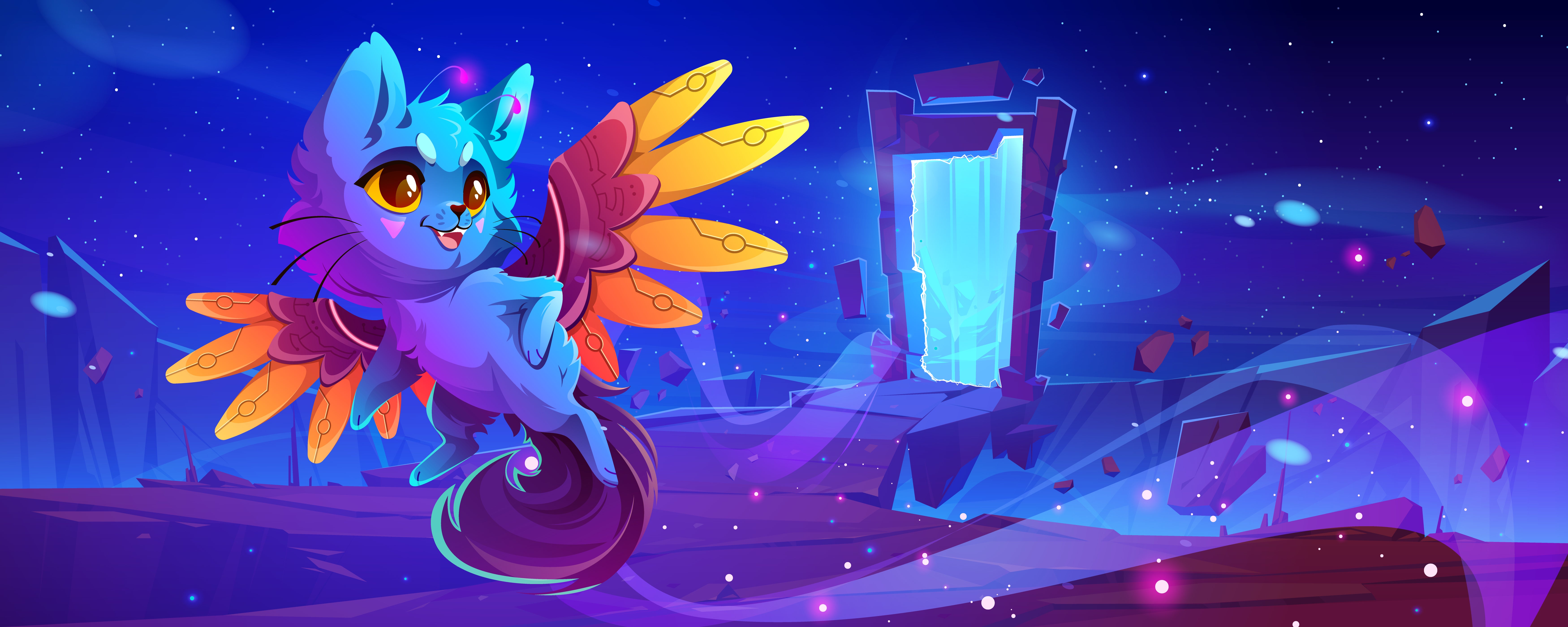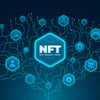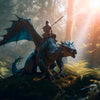Exploring the Process of Creating 3D NFT Art: From Concept to Tokenization

Introduction
A 3D NFT, or a three-dimensional non-fungible token, is a unique digital asset that represents ownership of a three-dimensional artwork or object. These digital assets can range from intricately sculpted characters and environments to virtual reality experiences. With each 3D NFT being one-of-a-kind and securely stored on a blockchain, they provide a verifiable and transparent way to authenticate ownership and provenance of these digital works of art. The rise of 3D NFTs has opened up new possibilities for artists and collectors, revolutionizing the way we perceive and value digital art in the blockchain era. So, welcome to the captivating world of 3D NFT art, where the convergence of creativity and blockchain technology is reshaping the digital art landscape.
In this blog post, we will embark on a fascinating journey, exploring the intricate process of creating and tokenizing 3D NFT art, from its conceptualization to its final transformation into a unique digital asset. By gaining insights into this dynamic process, you will gain a deeper understanding of the realm of digital art and be better equipped to navigate the exciting and ever-evolving realm of 3D NFTs.
What is 3D NFT Art and Why Should You Care?
3D NFT art refers to the creation and ownership of three-dimensional digital artworks through the use of non-fungible tokens (NFTs) on blockchain platforms. It combines the innovative techniques of 3D modeling and virtual artistry with the revolutionary capabilities of blockchain technology. With 3D NFT art, artists can showcase their creativity by sculpting intricate virtual objects, environments, or even immersive experiences. These artworks can be experienced and interacted with in virtual reality, augmented reality, or on traditional screens, offering a dynamic and engaging art form.
Why should you care about 3D NFT art? Firstly, it represents a paradigm shift in the art world, disrupting traditional notions of physicality and ownership. By tokenizing three-dimensional artworks as NFTs, artists gain greater control and recognition for their digital creations, while collectors can easily prove ownership and invest in unique and valuable digital assets. Furthermore, 3D NFT art fosters innovation and collaboration among artists, technologists, and enthusiasts, as they explore the limitless possibilities of virtual creativity. By embracing 3D NFT art, you can be at the forefront of this transformative movement, experiencing cutting-edge art forms and contributing to the evolution of the digital art landscape.
Conceptualizing 3D NFT Art
Before embarking on the creation of 3D NFT art, it all starts with a concept. Artists immerse themselves in their creative process, generating ideas and concepts that will guide their artwork. They explore various themes, styles, and subject matter, seeking inspiration from their surroundings, imagination, and personal experiences. Whether it's a fantastical creature, a futuristic cityscape, or an abstract representation of emotions, the artist's concept becomes the foundation of their artistic journey.
Utilizing advanced digital tools and software, artists bring their creative vision to life. Through the process of 3D modeling and sculpting, they shape virtual objects and environments with precision and detail. Artists use techniques such as polygonal modeling, digital sculpting, and texture painting to breathe life into their creations. This blend of technical skills and artistic vision allows them to craft intricate and visually stunning 3D artworks.

Creating and Refining 3D Artwork
Creating exceptional 3D NFT art requires skill, dedication, and a commitment to excellence. Artists embark on a meticulous process of refining their artwork, paying attention to every detail. They carefully consider lighting, texture, and composition to create a cohesive and visually appealing piece. Through a combination of technical expertise and artistic sensibility, the artist creates a captivating 3D masterpiece.
The creation process often involves iterative steps. Artists seek feedback from peers, mentors, or even their audience to gain fresh perspectives on their artwork. This valuable feedback helps them refine their creations, making adjustments and improvements along the way. The iterative process ensures that the artwork aligns with the artist's original vision, creating a piece that resonates with both the artist and the audience.
Preparing for Tokenization
To transform 3D artwork into an NFT, it's crucial to understand the fundamentals of blockchain technology and Non-Fungible Tokens (NFTs). Artists select a suitable NFT platform for tokenization, where they will mint their artwork as a unique digital asset. Each NFT holds distinct properties, representing the ownership and authenticity of the artwork on the blockchain.
Before proceeding with tokenization, artists must prepare their artwork accordingly. This involves ensuring that the 3D file is in a compatible format accepted by the NFT platform. Additionally, artists provide metadata, including a title, description, and potentially additional details about the artwork, such as its creation process or the artist's inspiration. Metadata adds valuable context to the artwork and contributes to its overall story and appeal.
Minting and Tokenizing 3D NFT Art
The moment has come to mint and tokenize the 3D artwork. Artists navigate their chosen NFT platform's user interface and follow a step-by-step process to assign unique properties to their artwork. These properties may include setting a price, determining the edition size (whether it's a one-of-a-kind artwork or part of a limited edition), and establishing a royalty structure that allows the artist to earn a percentage from future resales.
Minting the artwork on the blockchain creates a digital certificate of authenticity and provenance, ensuring that the ownership and history of the artwork are transparent and immutable. The minting process generates a unique token, representing the specific artwork and its ownership rights. Once minted, the artwork becomes a valuable digital asset that can be bought, sold, and collected within the NFT marketplace.
Showcasing and Marketing 3D NFT Art
Creating a remarkable piece of 3D NFT art is just the beginning. To gain recognition and attract potential buyers, artists need to showcase and market their work effectively. The power of social media, online communities, and dedicated art platforms can help artists reach a wider audience. Artists create captivating visuals and engaging descriptions of their artwork to captivate viewers and ignite interest.
Social media platforms such as Twitter, Instagram, and Discord serve as valuable tools for artists to share their work-in-progress, behind-the-scenes insights, and completed artwork. Engaging with the community and participating in relevant hashtags, discussions, and online events help artists build a following and establish their presence in the digital art space. Dedicated art platforms and NFT marketplaces provide a focused environment where artists can showcase their artwork and connect directly with potential collectors.
Collaborating with influencers, collectors, and galleries can amplify the visibility of an artist's work. Collaborative projects, joint exhibitions, or partnerships with established entities within the art community provide exposure to a broader audience. Participating in virtual galleries, art shows, and online events creates opportunities for collectors to discover and acquire the artist's 3D NFT art.

Navigating the NFT Marketplace and Sales
Once the artwork is minted and showcased, it's time to navigate the NFT marketplace where people can buy the NFTs.. Artists explore various NFT platforms, carefully selecting the ones that align with their goals, target audience, and artistic style. Each platform has its own features, community, and marketplace dynamics. Artists consider factors such as platform fees, discoverability, user experience, and community engagement when choosing where to list their artwork.
Optimizing the listings is essential to capture the attention of potential buyers. Artists craft compelling visuals and descriptive information that convey the unique qualities of their 3D NFT art. High-quality images, detailed descriptions, and engaging storytelling enhance the artwork's appeal and attract collectors. Setting a fair and competitive price requires considering factors such as the artist's reputation, demand for their work, and market trends.
Ensuring secure and transparent transactions is of utmost importance in the NFT marketplace. Artists must ensure that the platforms they choose have reliable transaction mechanisms and enforce transparent ownership rights. Smart contracts, built into the blockchain, automatically facilitate the transfer of ownership and royalties whenever the artwork changes hands. This technology ensures that artists receive their deserved compensation and collectors have peace of mind when acquiring valuable 3D NFT art.
The Journey of 3D NFT Art: Collectors and Beyond
In the vibrant ecosystem of 3D NFT art, collectors play a vital role. They appreciate and acquire artwork, becoming guardians of digital creativity. Establishing connections and engaging with collectors creates a network of support and appreciation for the artist's work. Artists interact with collectors through social media, dedicated platforms, and virtual events, fostering a sense of community and collaboration.
Building relationships within the collector community opens doors to collaborations, exhibitions, and potential opportunities beyond the digital realm. Collectors may curate their own virtual galleries or collaborate with artists on immersive experiences in virtual reality or augmented reality environments. The journey of 3D NFT art extends beyond creation and tokenization, offering a world of possibilities for artists and collectors alike.
Protecting and Preserving 3D NFT Art
Protecting and preserving 3D NFT art requires a thoughtful approach to address various challenges in the digital realm. One of the primary concerns is establishing and protecting intellectual property rights. Artists should be proactive in asserting their copyright ownership and usage rights for their 3D NFT artworks. This can be achieved by incorporating watermarks or digital signatures into the artwork itself, creating a clear record of authorship and authenticity. Additionally, artists may explore licensing options that allow them to retain control over how their artwork is used and shared.
Choosing the right platform for showcasing and selling 3D NFT art is also crucial for protecting the artist's rights. Artists should consider platforms that provide built-in licensing mechanisms, allowing them to specify the terms and conditions under which their artwork can be used or reproduced. These licensing mechanisms can range from simple personal use licenses to more restrictive commercial use licenses, depending on the artist's preferences.
Digital security is another critical aspect of protecting 3D NFT art. Artists should adopt robust security measures to safeguard their digital assets. This includes using secure storage solutions, such as encrypted hard drives or cloud storage services, to prevent unauthorized access or loss of the artwork. Implementing strong passwords and two-factor authentication adds an extra layer of security to online accounts and platforms. By regularly updating and maintaining these security measures, artists can minimize the risk of unauthorized use or theft of their 3D NFT art.
Considering the long-term preservation of 3D NFT art is also essential. Digital artworks can be vulnerable to file corruption or technological obsolescence. Artists should take steps to ensure the longevity of their creations by regularly backing up their files and storing them in multiple secure locations. This practice helps protect against data loss and allows for future retrieval and reissuing of the artwork if necessary. Additionally, artists can explore archival standards and practices for digital preservation to ensure that their 3D NFT art remains accessible and intact for future generations.

Conclusion
As we conclude our exploration of the process of creating and tokenizing 3D NFT art, we come to realize the immense potential and transformative power that this medium holds. With every stroke of the digital brush and each meticulously sculpted detail, artists are forging new frontiers of creative expression. By embracing blockchain technology, artists gain greater control and recognition for their digital creations, while collectors can participate in a revolutionary form of art ownership.
The world of 3D NFT art is a vibrant and dynamic ecosystem that invites artists, collectors, and enthusiasts to come together and redefine the boundaries of creativity. By venturing into this realm, you become part of an ever-evolving movement, where technology meets imagination to create immersive and interactive digital experiences. So, immerse yourself in the world of 3D NFT art, unleash your creativity, and embrace the transformative power of this groundbreaking medium as we shape the future of digital art together.




